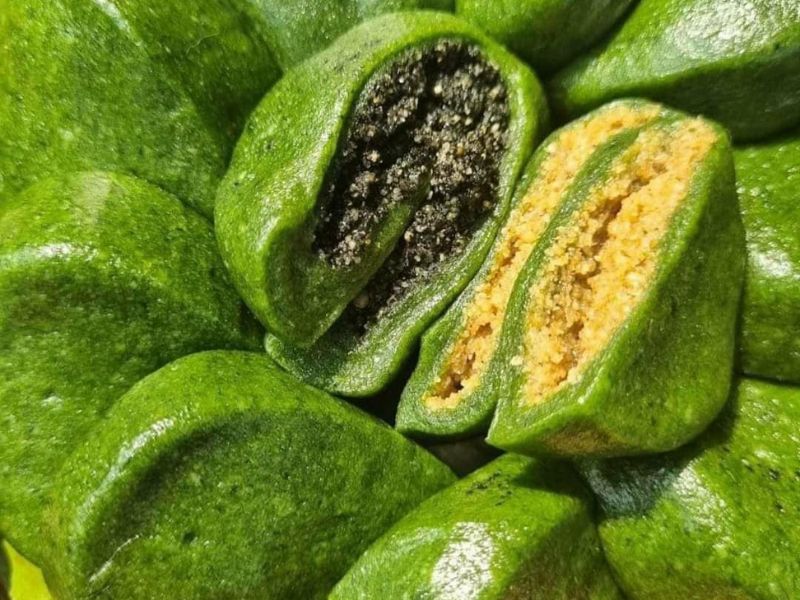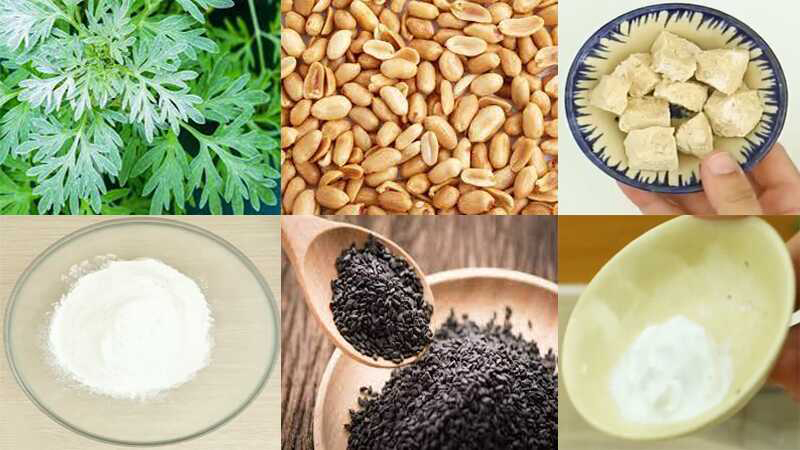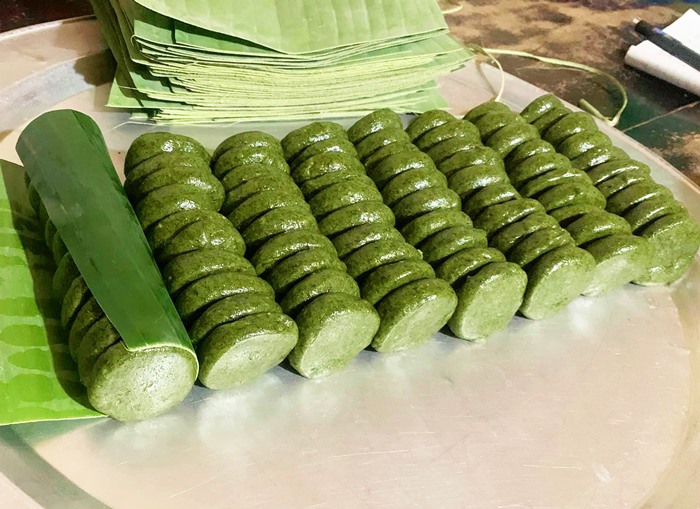Bánh Ngải
1. Overview
Bánh ngải (mugwort sticky rice cake) is a traditional Vietnamese dessert associated with the Tày and Nùng ethnic minorities in Lạng Sơn Province. This unique cake, made from glutinous rice and lá ngải cứu (mugwort leaves), stands out for its deep green color, soft texture, and subtle herbal aroma.
It is a symbol of ethnic culture and health-conscious cuisine, typically found during festivals, market days, or as an offering during ancestral worship.
2. Key Ingredients & Characteristics
-
Glutinous rice (nếp):
-
Carefully soaked, steamed, and pounded into a smooth, sticky dough.
-
-
Lá ngải cứu (mugwort leaves):
-
The defining ingredient. These wild-growing medicinal leaves are boiled and crushed before being kneaded into the rice.
-
They give the cake a rich green color, earthy aroma, and slightly bitter taste that balances the sweetness.
-
-
Filling:
-
Usually made from mung bean paste, lightly sweetened with sugar or honey.
-
Some versions add crushed peanuts or sesame seeds for extra texture and flavor.
-
-
Shape and size:
-
Typically small, round, and flat, resembling a thick coin.
-
Wrapped in banana leaves or presented directly once cooled.
-
3. How to Enjoy the Dish
Bánh ngải is best enjoyed:
-
At room temperature, after cooling and setting.
-
As a snack or dessert, paired with tea or warm herbal drinks.
Flavor profile:
-
The outer layer is soft, chewy, and fragrant, with a slight bitterness from the mugwort.
-
The filling is smooth, mildly sweet, and nutty — creating a balanced, delicate taste.
It's especially loved by those who appreciate traditional, natural flavors, and it’s often seen as a healthy snack thanks to the medicinal properties of mugwort.
4. Cultural and Regional Significance
In Lạng Sơn, bánh ngải is more than just food — it is part of the culinary heritage of the highland ethnic groups. It is usually made during:
-
Tết Thanh Minh (Clear and Bright Festival)
-
Ancestor worship ceremonies
-
Fairs and local markets, especially in the spring
For the Tày and Nùng people, bánh ngải represents gratitude, health, and the connection to nature. The process of making the cake, including picking the right leaves and pounding the rice by hand, is also a way to bring family members together.
5. Where to Try It in Lạng Sơn
-
Ky Lua Market: A popular place to find freshly made bánh ngải, often sold by local women in traditional dress.
-
Rural fairs and spring festivals: Especially in Cao Lộc, Văn Quan, and other ethnic minority districts.
-
Some versions are also sold vacuum-packed as gifts for tourists.




